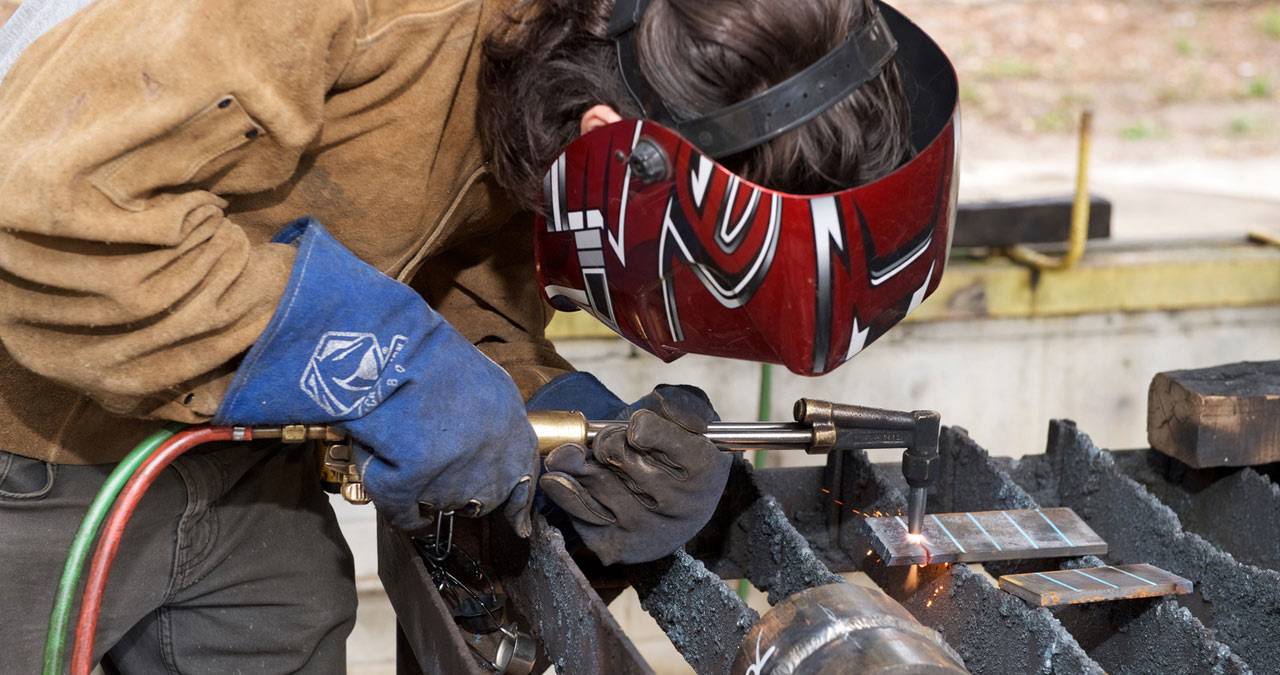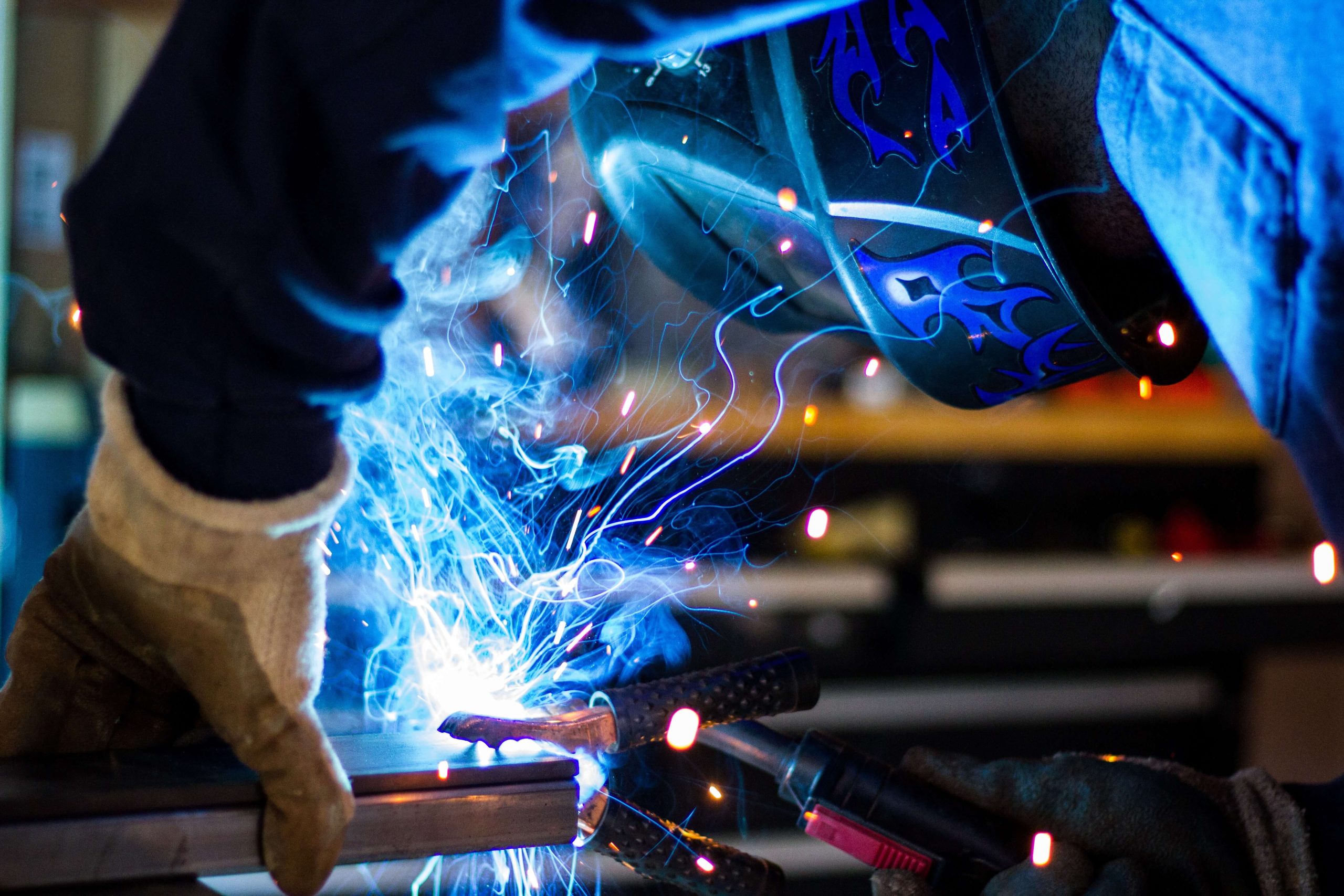All Concerning Welding: Trick Insights Into Techniques and Finest Practices for Success
Welding includes a range of methods, each suited for certain products and applications. Understanding these methods, such as GMAW, SMAW, and TIG, is crucial for achieving perfect outcomes. Additionally, the appropriate equipment and security methods can not be neglected. As prep work and repairing play crucial functions in the welding process, understanding these components can substantially enhance the top quality of the end product. What are the vital variables that ensure an effective weld?
Comprehending Various Welding Methods
Welding methods include a selection of approaches, each fit to particular applications and materials. Amongst one of the most usual techniques are Gas Steel Arc Welding (GMAW), Shielded Steel Arc Welding (SMAW), and Tungsten Inert Gas Welding (TIG) GMAW, likewise referred to as MIG welding, is prominent for its speed and flexibility, making it excellent for slim products. SMAW, or stick welding, is preferred for its simplicity and efficiency in outside atmospheres, particularly with thicker steels. TIG welding offers accuracy and control, making it ideal for complex job and non-ferrous steels (Fabrication). Each technique has its special benefits and factors to consider, enabling welders to pick the best technique based upon the task's requirements, product type, and wanted results. Understanding these techniques is essential for successful welding
Necessary Welding Devices and Devices
While numerous welding methods need details skills, the ideal tools and devices are just as necessary for attaining top quality results. Important welding devices consists of welding machines, which differ relying on the strategy-- such as MIG, TIG, or stick welding. Safety equipment, consisting of gloves, aprons, and helmets, guarantees safety and security and comfort during the procedure. Additionally, clamps and fixtures help protect products in position, guaranteeing accuracy in welds. Consumables like welding rods, cable, and shielding gas are also essential elements that influence the quality of the weld. Tools such as grinders and cutters assist in surface area preparation and post-weld finishing, contributing to a specialist result. Spending in premium equipment inevitably improves the efficiency and efficiency of welding jobs.
Security Practices in Welding
Correct safety and security methods are crucial in the welding sector to protect employees from prospective dangers. Welders should put on appropriate personal safety tools (PPE), consisting of headgears with proper shading, handwear covers, and flame-resistant garments. Ample air flow is important to lower direct exposure to dangerous fumes and gases produced throughout the welding process. Additionally, employees must be learnt the appropriate handling of welding equipment to avoid crashes. Fire precaution, such as maintaining combustible products far from the welding area and having fire extinguishers easily available, are required. Normal assessments of tools and workspaces can assist recognize possible risks prior to they bring about crashes. By adhering to these safety methods, welders can produce a much safer working setting and minimize risks related to their trade.
Readying Products for Welding
Preparing products for welding is a vital step that greatly affects the top quality and honesty of the last product (Montana Mobile Welding and Repair Welding). Correct prep work includes cleaning up the surfaces to remove pollutants such as oil, rust, and dirt, which can compromise the weld. Strategies such as grinding, sanding, or making use of solvents are commonly utilized to accomplish a tidy surface. Additionally, ensuring that the products fit with each other comfortably is important; spaces can result in weak welds. It's also vital to consider the positioning and positioning of the parts, as this will affect the convenience of welding and the final outcome. Choosing the appropriate filler material and making certain compatibility with the base metals is essential for accomplishing solid, resilient welds.
Tips for Getting High-Quality Welds
Accomplishing high-grade welds requires attention to information and adherence to ideal practices throughout the welding process. Correct joint preparation is important, ensuring surfaces are free and clean from pollutants. Choosing the suitable filler material and welding strategy based upon the base metals is important for excellent bonding. Maintaining regular travel rate and angle while welding can promote and stop problems uniformity. Furthermore, managing heat input is crucial; excessive warm can cause bending and damaged joints. Routinely checking the welds throughout the procedure enables instant modifications if required. Using proper post-weld therapies, such as cleaning and tension relief, can enhance the resilience and integrity of the weld, eventually guaranteeing a successful result.
Troubleshooting Usual Welding Issues
Welding commonly offers challenges that can influence the high quality and integrity of the last product. Typical problems such as porosity, irregular weld beads, and getting too hot can arise, each needing certain repairing techniques. Recognizing these issues is essential for welders to boost their abilities and achieve ideal outcomes.
Porosity Problems Clarified
Porosity can often be overlooked, it stays a crucial concern in welding that can compromise the integrity of a completed item. Porosity describes the presence of little gas pockets within the weld grain, which can compromise the joint and lead to early failing. This issue commonly occurs from impurities, wetness, or inappropriate securing gas coverage throughout the welding procedure. To alleviate porosity, welders ought to confirm that the base products are clean and dry, utilize suitable shielding gases, and keep constant welding specifications. Regularly examining the equipment and environment can also assist determine possible concerns prior to they materialize in the weld. Dealing with porosity effectively is vital for accomplishing solid, sturdy welds that fulfill top quality criteria.

Inconsistent Weld Beans
Inconsistent weld beads can significantly impact the quality and stamina of an ended up item. Various variables add to this problem, consisting of improper travel rate, incorrect amperage setups, and inconsistent electrode angles. When the welder moves also promptly, a bead might appear narrow and do not have penetration, while relocating as well slowly can trigger extreme buildup. Furthermore, making use of the wrong amperage can lead to either undercutting or excessive spatter, both of which compromise weld integrity. The welder's technique, such as irregular torch movement, can also cause uneven bead appearance. To reduce these troubles, welders ought to concentrate on keeping constant, regulated movements and ensuring proper equipment setups a fantastic read to achieve uniformity in their welds. Uniformity is crucial to attaining reliable and solid welds.
Overheating and Bending Issues
Too much heat during the welding process can result in significant getting too hot and buckling issues, affecting the structural integrity of the workpiece. These issues commonly show up as distortion, which can endanger placement and fit-up, making more assembly challenging. Aspects adding to overheating include the option of welding criteria, such as voltage and travel rate, as well as the sort of product being bonded. To minimize these problems, welders must maintain regular travel rate and suitable heat input while checking the workpiece temperature. Furthermore, preheating or post-weld warmth treatment can assist reduce stress and anxieties brought on by quick air conditioning - Belgrade Welding. Routine evaluation and adherence to ideal techniques are necessary in avoiding overheating and guaranteeing the durability and dependability of welded frameworks
Often Asked Questions
What Are the Occupation Opportunities in the Welding Industry?
The welding market provides diverse profession chances, consisting of settings as welders, educators, engineers, and examiners. Experts can work in production, construction, aerospace, and vehicle markets, gaining from strong demand and competitive wages in numerous roles.
Exactly How Can I Boost My Welding Speed Without Sacrificing Top Quality?
To boost welding rate without sacrificing top quality, one need to practice reliable methods, preserve tools, optimize settings, and improve hand-eye sychronisation. Routine training and seeking comments can likewise considerably contribute to accomplishing faster, high-quality welds.
What Accreditations Are Readily Available for Welders?
Countless certifications exist for welders, consisting of those from the American Welding Culture (AWS), the National Center for Building And Construction Education and Research Study (NCCER), and different industry-specific companies. These credentials improve employability and show ability effectiveness.
Exactly How Does Welding Affect the Features of Metals?
Welding affects the buildings of steels by modifying their microstructure, which ac welding can lead to modifications in toughness, ductility, and hardness. Warm input and air conditioning prices throughout the process significantly affect these product characteristics.
Can I Weld Dissimilar Metals With Each Other?
